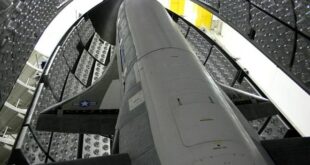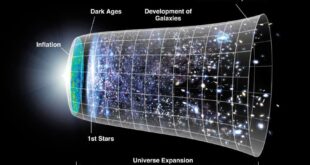A strange third band of radiation has been discovered circling the Earth, according to NASA, upending a long-standing scientific theory about how charged particles interact with our planet.
The band, discovered in September 2012, is no longer present, although NASA says scientists spent the better part of two months observing the radiation band before it disappeared. The discovery was largely the result of a pair of NASA probes launched in 2012 to collect data on Earth’s Van Allen Belts. According to the space agency, the pair of probes discovered the strange third band of radiation just four days into the mission. Scientists say the pair of probes transmitted back data that seemed to reveal a third belt of high-energy particles between the planet’s inner and outer radiation bands.
By the end of 2012, however, the band seemed to disappear. Now, NASA says it has data that seems to indicate the band was “annihilated” by a massive solar flare ejected by the sun in October 2012. Previous observations had observed two distinct belts of radiation, and scientists have long known of their ability to be affected by solar storms and space weather, which can swell them dramatically.
The discovery is significant for a number of reasons, according to NASA, as the Van Allen Belts largely remain a mystery. Discovered in the 1960s, astronomers have struggled to studying their evolution and discover their origin. In a statement released Friday, NASA said the discovery shows the dynamic and variable nature of the radiation belts and improves our understanding of how they respond to solar activity.
According to the space agency, the instruments on the pair of probes provides the measurements necessary to characterize and quantify the plasma processes that produce very energetic ions and relativistic electrons. The Van Allen probes are part of the broader LWS program whose missions were conceived to explore aspects of the connected sun-Earth system that directly affect life and society. The space agency says the instruments measure the properties of charged particles that comprise the Earth’s radiation belts, the plasma waves that interact with them, the large-scale electric fields that transport them, and the particle-guiding magnetic field.
The two Van Allen Probe spacecraft have nearly identical eccentric orbits. The orbits cover the entire radiation belt region and the two spacecraft lap each other several times over the course of the mission. The Van Allen Probes in-situ measurements discriminate between spatial and temporal effects, and compare the effects of various proposed mechanisms for charged particle acceleration and loss.
The Space Reporter
 Conspiracy Plot
Conspiracy Plot






